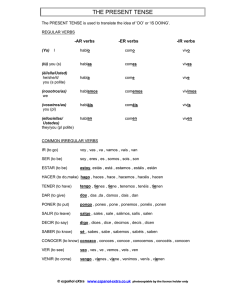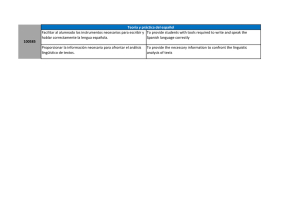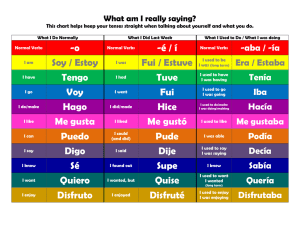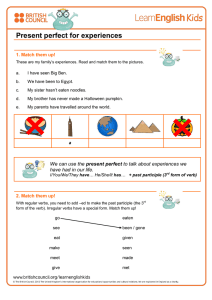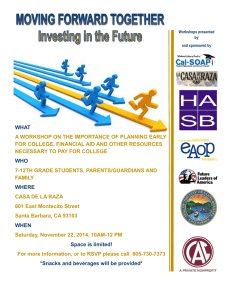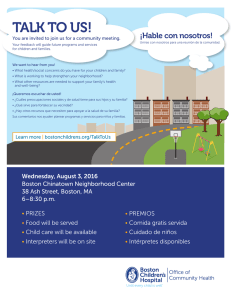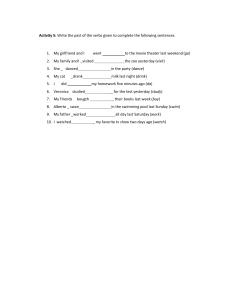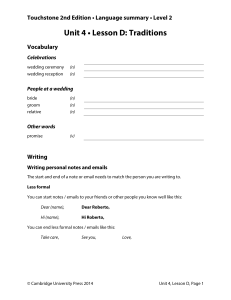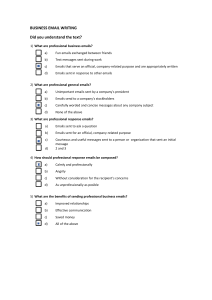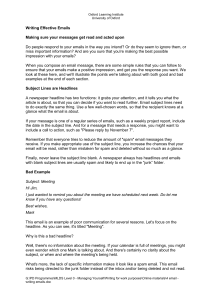Adjunto 1
Anuncio
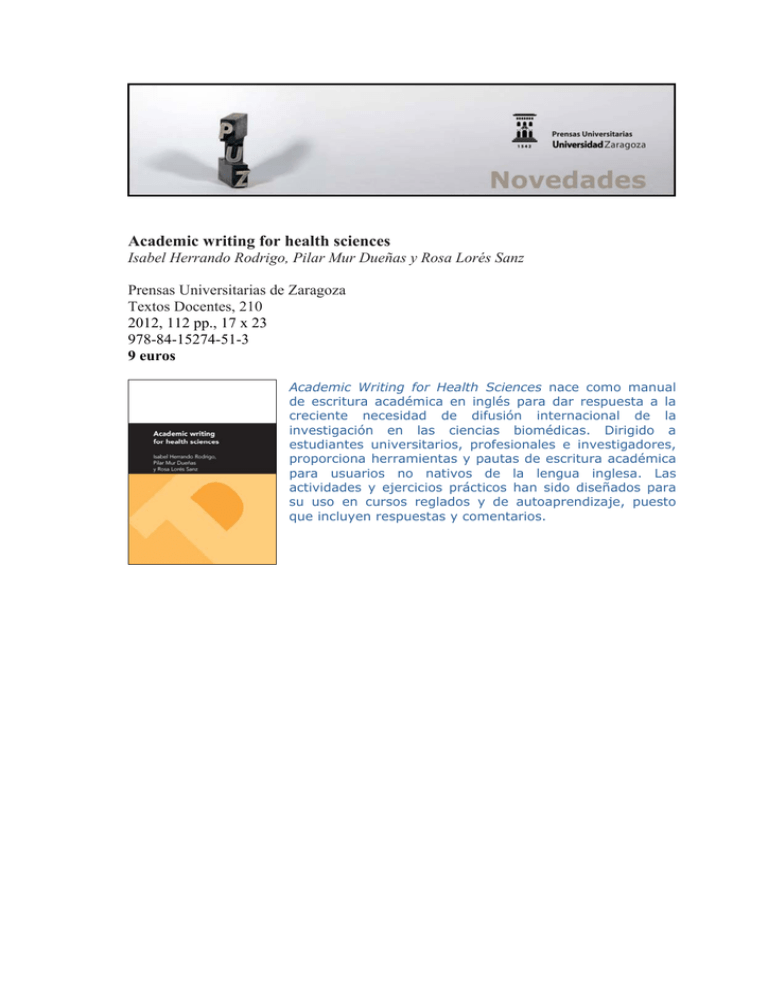
Academic writing for health sciences Isabel Herrando Rodrigo, Pilar Mur Dueñas y Rosa Lorés Sanz Prensas Universitarias de Zaragoza Textos Docentes, 210 2012, 112 pp., 17 x 23 978-84-15274-51-3 9 euros Academic Writing for Health Sciences nace como manual de escritura académica en inglés para dar respuesta a la creciente necesidad de difusión internacional de la investigación en las ciencias biomédicas. Dirigido a estudiantes universitarios, profesionales e investigadores, proporciona herramientas y pautas de escritura académica para usuarios no nativos de la lengua inglesa. Las actividades y ejercicios prácticos han sido diseñados para su uso en cursos reglados y de autoaprendizaje, puesto que incluyen respuestas y comentarios. Table of contents INTRODUCTION .................................................................................... 7 1. WRITTEN ACADEMIC LANGUAGE: GENERAL ASPECTS ........ 11 1.1. Features of formal grammar and style ............................................... 11 1.2. Formal vs. informal verbs .................................................................. 13 1.3. Academic phraseology .......................................................................14 1.4. Referring to other scholars‟ work ...................................................... 15 1.4.1. The first sentence in a summary ........................................ 15 1.4.2. Reporting verbs .................................................................. 15 1.4.3. Citations ............................................................................. 16 1.5. Qualifications and commitment ......................................................... 18 1.5.1. Probability ......................................................................... 18 1.5.2. Distance ............................................................................. 19 1.5.3. Generalizations .................................................................. 19 1.5.4. Weak verbs ........................................................................ 20 1.5.5. Combined qualifications .................................................... 20 1.6. Evaluative language ........................................................................... 22 1.7. Personality vs. impersonality ............................................................. 24 2. GUIDELINES ON HOW TO WRITE AN ABSTRACT .................... 27 2.1. Introduction to the research article (RA) abstract ............................. 27 2.2. Introduction to the conference abstract ............................................. 28 2.3. Rhetorical structure of abstracts ........................................................ 29 2.4. Linguistic features of abstracts .......................................................... 34 2.5. Writing an abstract ............................................................................ 39 3. GUIDELINES ON HOW TO WRITE AN RA ................................... 41 3.1. General aspects of the RA ................................................................ 41 3.2. The Introduction ............................................................................... 43 3.2.1. Claiming centrality ........................................................... 44 3.2.2. The literature review ......................................................... 45 3.2.3. Indicating a niche ............................................................... 46 3.2.4. Occupying the niche and stating the purpose ................ 47 3.3. The Methods section ......................................................................... 49 3.4. The Results section ........................................................................... 51 3.4.1. Locating elements ............................................................. 51 3.4.2. Highlighting statements .................................................... 51 3.4.3. Stating implications, problems or expectations ................ 52 112 Herrando Rodrigo, I., Mur Dueñas, P. y Lorés Sanz, R. 3.5. The Discussion ................................................................................. 3.6. Other things to consider: titles and acknowledgements ................... 3.6.1. Titles ................................................................................. 3.6.2. Acknowledgments ............................................................ 54 57 57 58 4. ACADEMIC CORRESPONDENCE AND EMAILS ......................... 4.1. Writing academic emails: general features ....................................... 4.1.1. Formal or informal? .......................................................... 4.1.2. Abbreviations .................................................................... 4.1.3. Attachments ...................................................................... 4.1.4. Sentence structure ............................................................. 4.1.5. Checking understanding ................................................... 4.2. The submission letter/email ............................................................... 4.3. Subsequent correspondence with journal editors ............................. 4.3.1. Getting impatient about the lack of news ......................... 4.3.2. Editors‟ letters ................................................................... 4.3.3. Replying to editors‟ letters ................................................ 4.3.4. Reviewer reports ............................................................... 4.3.5. Receiving proofs ............................................................... 4.4. Other types of academic emails and letters....................................... 4.4.1. Inviting a keynote speaker ................................................ 4.4.2. Inviting a scholar to be part of a scientific committee ..... 4.4.3. Asking for a bibliographical reference ............................. 61 61 61 62 63 64 64 66 68 68 69 72 73 74 75 75 76 77 5. HOW TO INTRODUCE ONESELF IN WRITTEN FORM IN ACADEMIA ............................................................................................ 5.1. The bionote ....................................................................................... 5.2. The brief CV ..................................................................................... 5.3. The long CV ..................................................................................... 5.4. The cover letter ................................................................................. 79 79 84 88 89 REFERENCES ........................................................................................ 93 KEY TO THE EXERCISES .................................................................... 95 APPENDIX ...............................................................................................107


